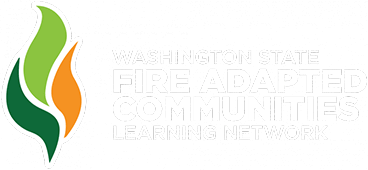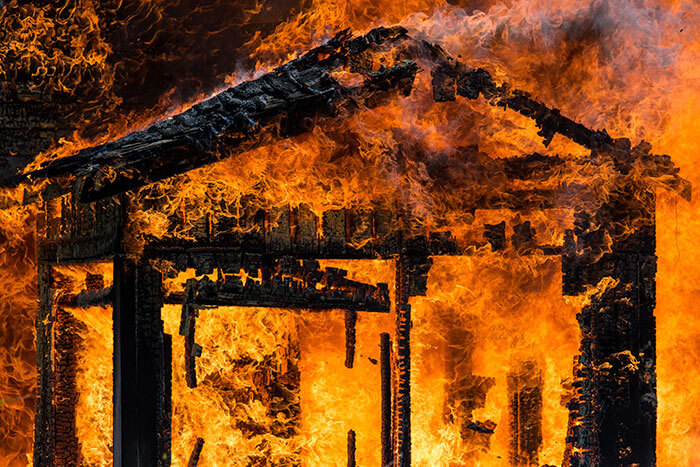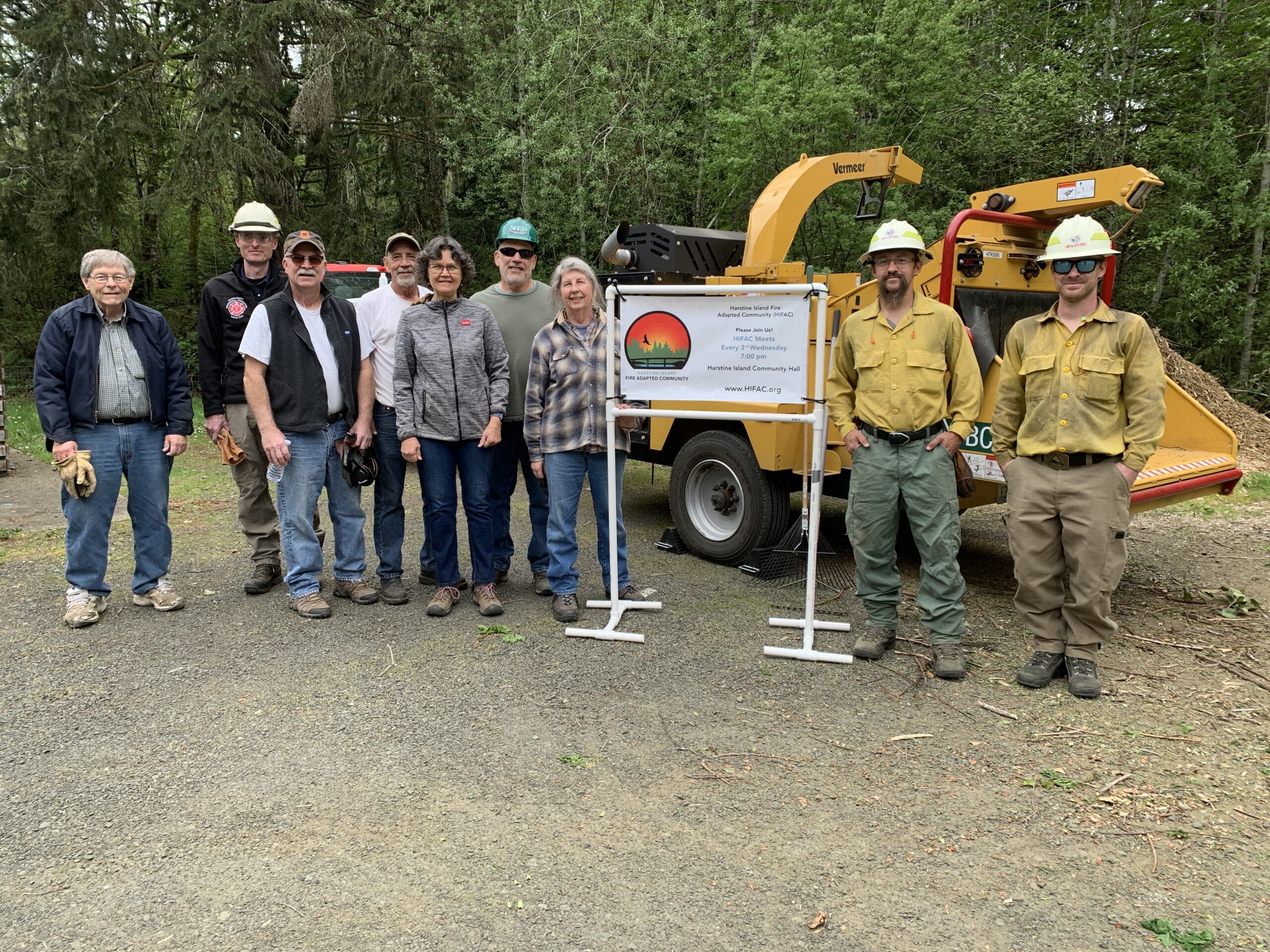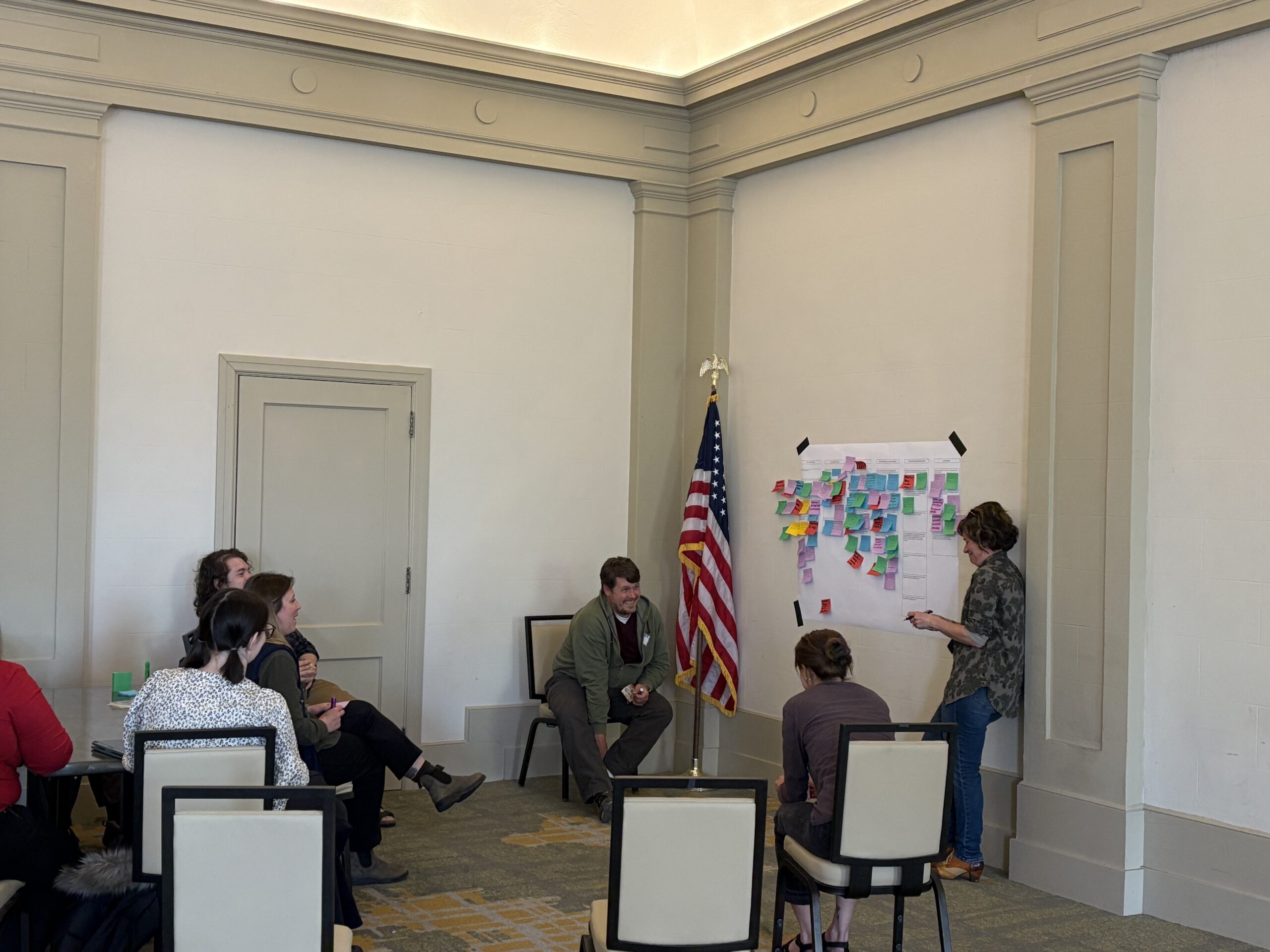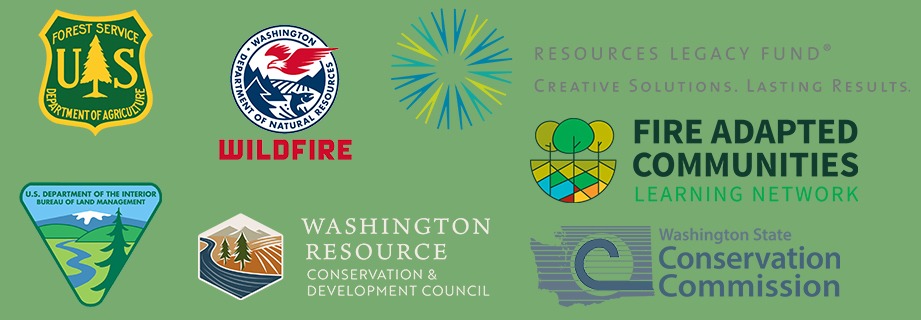As many participants from the 2014 Colorado Springs Fire Adapted Communities/Fire Learning Network Annual Meeting will recall, the folks from Washington could often be found after sessions meeting in hallways, scribbling frantically on napkins, conversing animatedly over an indecipherable flip-chart full of colors and a rough outline of Washington State, and animatedly talking about opportunities and needs.
That was in the spring of 2014. That was before.
Before the Carlton Complex wildfire took almost 350 homes.
Before the Sleepy Hollow and Chelan Complex wildfires burned into 2 more communities. Before the wettest forest in Washington State caught fire on the Olympic Penninsula- an area not necessarily known for dryness. Before Washington saw over 1 million acres burn. Before the fire season (2014) with our largest ever wildfire was eclipsed (3 times over) by this year’s fire season.
Before the communities of Twisp, Winthrop, Conconully, Tonasket, Havillah, Riverside, Omak, Okanogan, Nespelem, Malott, Chiliwist, Buzzard Lake, Leader Lake, Aeneas Valley, and Concrete were evacuated. In their entirety.
Before the Twisp River Fire took 3 lives.
No one from Washington will tell you the last two fire seasons have been normal or good, but the reality is that they represent the ever evolving “normal.” According to social media, Washington has been the equivalent of Mordor, the gates of hell, and the underworld… plus a few more that don’t bear repeating. But buried in all of that, the Washington State Fire Adapted Communities Learning Network has emerged. All of the scribbling and frantic napkin writing was before seven communities throughout Washington State were selected – communities that were learning from, sharing with, and leaning on each other during one of Washington’s worst summers.
If the need for a state-level expansion network was clear before the 2014 fire season, it is crystal clear now. The benefits of having the network in place before the 2015 fire season cannot be understated. Timing is a big part of a successful endeavor and in this case, having communities working to adapt to wildfire was extremely well-timed. The Washington Fire Adapted Communities Learning Network can add support in places and to efforts that are buried in post-fire needs and opportunities. The Washington Fire Adapted Communities Learning Network is already contributing to state-level discussions on how we adapt and prepare for next season. The Network is in the on-going process of evaluating what is working well and how can we do more of it, what needs improvement, and what needs a new approach altogether in ongoing actions to prepare before, during and after fire.
As participants in the National Fire Adapted Communities Learning Network and Fire Learning Network, as well as members of the Washington State Fire Adapted Communities staff team and Steering Committee, we have had a chance to see the Washington Network evolve from some unique perspectives. While we are still learning, there are a few key points that have emerged as clear lessons for any who are looking at regional expansion of networks.
- Network density matters. Your state or regional network is going to be more dense than the national network (more communities in a smaller geographic area). This is going to have implications in lots of places and is probably the single biggest lesson from our perspective.
- The pressure to grow will be high very early on. Get a growth strategy as soon as possible but be prepared to adapt (see 1b).
- The network can move fast (even faster perhaps than the National network). You are going to make decisions one week and then reevaluate them the next.
- Your communities are going to be very diverse and may be coming to the table with extremely different capacities. Terms used in early meetings should be clarified and explained every time. Assumptions about the scale of work, or specific aims of any of your participants, should not go unchecked.
- More opportunities for in-person networking exist.
- Things that impact a region nationally are likely to impact half your network at a state-level (see Fire Seasons 2014 and 2015). This can have ramifications for community needs as well as state-level Network needs… not to mention human and organizational capacity.
- Make sure you have the organizational business capacity necessary to support network logistics and operations (see 2 below). You need accounting/book keeping, purchasing capacity, and someone to hold the software licenses, rent the meeting spaces, phone lines, and more. A Firesafe Council, non-profit with fiscal oversite, or existing Fire Adapted Community Learning Network members are good places to start.
- The ability to “let the network do the work” is very high. Set this expectation and foster it. Find that sweet spot between what may seem like chaos from the set plan, to embracing the unexpected that excels the Network toward producing desired outcomes.
- Initial, reliable and stable funding is helpful when kicking off a network using the National model. In order to provide support (at least of the financial variety) to communities, you have to have funds in the bank. In our case, funding has also allowed us to allocate staff time to developing the network. In addition to staff, a Steering Committee of dedicated individuals was established early on to provide resources, information and opportunities to participating communities. This all helps add value to those participating in the Network; value that goes beyond their financial support. It should also be noted that there are many additional network models that don’t require as much initial capital. Building from a network that is less formal and focus mostly on information sharing and technical assistance is also a viable approach and costs less than a network where pass-through subawards are part of the model.
- Understanding of fire adapted communities concepts will be key but is not a given. Communities selected for inclusion may be used to using only one set of vocabulary to define themselves (e.g. “Firewise”) even if their actions represent a spectrum of adaptation to wildfire. The time you spend introducing these communities to the concepts of FAC is critical and should be reinforced often. Part of this work may be exposing them to additional facets of adaptation. When possible, try to do this by connecting them with other FAC practitioners. Relationships between network members is the most critical “capital” a network can have, so make use of this opportunity to spread ideas and good programs.
- Partners are important and making space early on to weave them into the Network should be considered. They may not be on the Steering Committee, a member receiving funding, or an entity you have a “place” for out of the gate – but connecting with these partners can and will be important. These partners add function to the network and there is a huge benefit to state and regional programs as well as technical service providers participating with communities. This is reason number #2487542 for a growth strategy.
- Communication (frequent, high quality, and purposeful) is critical. Not a nice to-do, but a critical part of standing up any network.
- Learning from those who have gone before should not be considered optional. Having a liaison or point of contact with the National network staff (the amazing Michelle Medley-Daniel) is a huge step up. Many lessons learned at National level apply locally (see www.facnetwork.org for some great examples of lessons from the field). You can adapt many materials, processes and ideas from the national scale – just don’t be afraid to edit them as you are a more dense version of the National network with different needs at a different scale.
- Read Connecting to Change the World. At least twice.
- Figure out how you are going to communicate about your network. The Governor is coming! Do you have a one-pager talking about what you are doing? A funder is interested! Anyone have a communication strategy? You are going to need information – not just to give to the communities you are on-boarding, but to people outside the network.
- Sometimes you need to put your head down and dig. There can be lots of pressure to succeed as a network and as a State. It will come from all directions and at the worst possible times. Acknowledge it and then move on and keep digging the next section of line. Don’t forget to pop your head up every now and again to get some situational awareness, but there are times when you just need to make progress together as a crew (or staff team).
- You are going to make mistakes. Lots of them. Probably best to learn from them and get over it.
- Be willing to listen to all of those lessons and then throw them out if you have a different way. The power of networks lies in their people – and in their flexibility. This is hard for people used to managing or operating in organizations. Developing the strength to go your own way is important.
- FAC is not an incident and it is not seasonal. There is a lot of communication that CAN happen when smoke is in the air, but FACs need to be active year round in preparing for the “before”, “during”, and “after” of wildfire.
We can’t say what comes after… we are still figuring that out. But as the FAC movement becomes more prevalent, hopefully we will see more and more regions hopping on board with sub-networks of their own. Feel free to give us a shout in Washington – we are happy to share.
